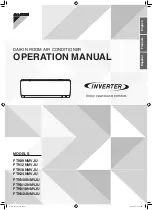
Page 41 of 84
DANGER
ELECTRICAL SHOCK HAZARD
Disconnect electric before service.
More than one disconnect switch
may be required to disconnect
electric from equipment.
Equipment must always be
properly grounded.
Section 13:
Unit Electrical:
Each unit is equipped with a wiring diagram (permanently
attached behind clear view plastic on the inside of the
control compartment door or on laminated sheets in an
inside compartment) which will vary depending on the
type of controls and options supplied. Check unit data
plate for unit electrical data.
Note: Spark testing or shorting of the control wires by any
means will render the transformers inoperative.
130.1 Wiring and Electrical Connections
All electrical wiring and connections, including electrical
grounding, must comply with;
United States: Refer to National Electrical Code®, NFPA
70 - latest revision. Wiring must conform also to local
ordinances and any special diagrams furnished.
Canada: Refer to Canadian Electrical Code, CSA C22.1
Part 1 - latest revision.
Check rating plate on unit for supply voltage and
current requirements.
If any of the original control wire supplied with the unit
must be replaced, replace it with type THHN 221° F
[105°C], 600 V, 16 gauge wire or equivalent. For all other
wires, replace with the equivalent size and type of wire
that was originally provided with the unit.
13.2 Disconnect
An external weather-tight disconnect switch properly
sized for the unit total load is required for each unit. This
disconnect can be supplied by the factory or supplied by
others. Do not use the unit disconnect as a method of on/
off control. Use the operating controller or thermostat to
shut down the unit.
13.3 Current Draw
For current requirements of the unit, refer to the unit
rating plate.
13.4 Wiring Connections
Power wiring should be connected to the main power
terminal block located within the unit main control
section. Power wiring connections on units with factory-
mounted disconnects should be made at the line side of
disconnect. Main power wiring should be sized for the
minimum wire ampacity shown on the unit rating plate.
For your safety, make sure that the unit has been properly
grounded at ground lug connection. Do not obstruct
service panels or service areas with electrical gear.
13.5 Voltage Unbalance
The power supply should be checked against the unit
nameplate characteristics. It must be within 10% of rated
voltage and not more than 2% phase unbalance. The
power supply cables must be sized to carry the minimum
circuit ampacity listed on the nameplate.
Once it is established that supply voltage is within the
utilization range; check and calculate if an unbalanced
condition exists between phases. Calculate percent
voltage unbalance as follows:
Percent
Maximum Voltage Deviation
Voltage = 100x
From Average Voltage
Unbalance
Average Voltage
For Example – With voltage of 220, 215 and 210
(Measure L1-L2, L1-L3, L2-L3)
Average voltage = 645 ÷ 3 = 215
Maximum voltage deviation from
Average voltage = 220 – 215 = 5
Percent
100 x 5 = 500
Voltage Unbalance
215
215 = 2.3%
Percent voltage unbalance must not exceed (2%) two
percent. Contact Power Company if phase unbalance
exceeds 2%. A means of disconnecting power from the
unit must be placed adjacent to the unit in accordance
with national electrical code or local codes. Aluminum
power wire is not recommended.
13.6 Low Voltage Wiring
For commercial equipment the following table lists the
minimum size of 24-volt class 2 wire to be used.
Wire Size
Distance From Unit, or Longest Run
18 AWG
Maximum Run - 50 Feet
16 AWG
Maximum Run - 75 Feet
14 AWG
Maximum Run - 100 - 125 Feet
12 AWG
Maximum Run - 150 - 200 Feet
Table 4: Low Voltage Wiring Lengths
PR Series Installation, Operation, and Maintenance Manual
Содержание PR 036 Series
Страница 2: ...This Page is Intentionally Blank...
















































